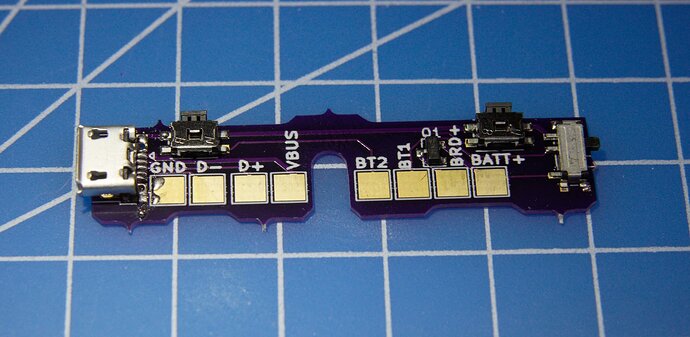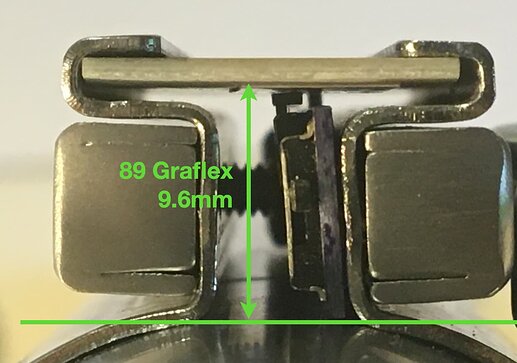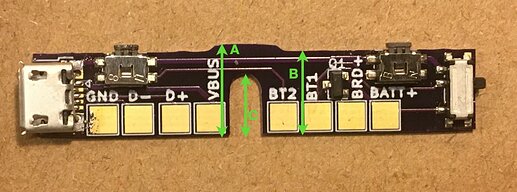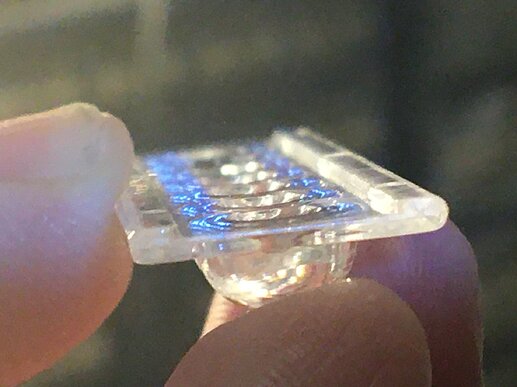OK, here’s my report for the Proffie Flashback:
I’ve been working with an 89 Sabers Graflex hilt. It seems the switch box depth on the 89 is significantly less than that of a Replica.
Compare photos 1 and 2. Photo 1 is the 89 Graflex switchbox and photo 2 is a KR Replica (the first run he did with the slightly askew red button). These were both taken after I had modified the Flashback to fit the 89.
In terms of the modification needed to make the Flashback fit the 89, photo 3 shows the relevant measurements, the modifications to which are shown below:
Before Sanding:
A 11.75mm
B 10.75mm
After Sanding:
A 10.0mm
B 9.27mm
As you can see, in order to fit the 89, I had to skim the bottom of the Flashback almost back to the solder pads. I also had to elongate the centre slot slightly (measurement C). Unfortunately I forgot to check that measurement before I started, but I estimate I had to increase it by about 0.8mm. I basically went as high as I could without touching the trace running across the top of it.
I also had to shave the clamp card a little to make it work, though if using a Replica, this wouldn’t be necessary.
Whilst talking of clamp cards, I suspect that the Flashback may not work very well with a bubble strip for two reasons. Firstly the bubble strip is quite rigid, so may not provide the little bit of flex needed - especially when trying to do button combinations to press both at once. But secondly, the bubble strip has shoulders which limit movement in the channels. (See photos 4 and 2). I checked both the 89 strip and the KR strip and they were both the same and are around 0.7mm tall. You may be able to sand them away, but I don’t know how that would effect the structure of the strip. Maybe someone else has tried it?
Finally I haven’t got as far as wiring it up yet (I thought I had a chassis for this hilt, but when I went to build it it turns out I haven’t, so one has been ordered). However that side of it all looks pretty self-explanatory so I don’t think there will be any revelations there. The only thing people may wish to note is the fact that they would need to drill a hole or cut a notch out of the front section of the hilt under the clamp for the wires to pass through. This may also have a bearing on the type of chassis selected for an install that includes the Flashback.
Hope that’s useful.






